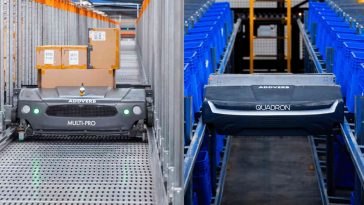The Economics of Smart Work Zones is a comprehensive report, written by the authors of a leading technology research firm, which provides a critical overview of the key issues and economic factors in smart work zone implementation. The study also outlines a framework for choosing the right technology to suit your requirements. It includes information on how the device may impact performance measure reports, and how data collection can affect project budgets.
Data collection options
Data collection options for smart work zones can be a challenge. Agencies need to make sure they have the most accurate information available for alerting and situation awareness. However, the quality of estimates depends on sensor spacing and other factors.
One way to improve the quality of data is to use different types of sensors. These can include microwave radar detectors, inductive loops cut into the pavement, or video detection cameras. Some of these devices can be fixed, while others can be mobile and portable.
Another option is to rely on connected devices. This can help collect data in real time. For example, a construction vehicle sensor can display speed limits, occupancy per lane, and classification. It can also provide information on the time of deployment and the location of a work zone.
Smart arrow boards can also provide information. They can provide the location of a work zone and a link to the real-time traffic conditions in the work zone. However, these devices do not provide details on the duration or restrictions of a work zone.
The Work Zone Data Initiative (WZDI) is a collaborative effort led by the Federal Highway Administration (FHWA) and the Intelligent Transportation Systems Joint Program Office (ITS JPO). It provides an architecture for the deployment of smart work zones.
A pilot test was conducted to determine the performance of several data acquisition methods. Data from several sensors was used to estimate queue lengths and travel times. During this process, truck speed readings were selected based on the amount of truck traffic. Speed readings were binned in one-mile intervals along the roadway.
Using this information, SMATS calculated live travel times. Variable message signs displayed alternate route times. While these methods were not necessarily automated, they showed the ability to achieve a work zone’s most impressive feats.
Using smart arrow boards, vehicles can be informed about work zones and rerouted to avoid congestion. The benefits of these systems are numerous, including the reduction of driver frustration, the reduction of collisions, and the increased safety of roadside workers.
Impact of devices on project budget
One of the biggest challenges in deploying smart work zone devices is the cost. The total project budget can impact the device cost by 0.25% to 0.80%. Considering the value of the data that can be gathered, it’s important to understand how the device costs can affect the overall budget.
The impact of smart work zone devices on the project budget is dependent on the number of devices that are installed. More devices can increase the capacity of the system, enabling it to notify incident detection and perform performance monitoring. It can also reduce delays and improve safety.
Connected devices in work zones are becoming more common. They can monitor traffic, detect incidents, and identify portable equipment. But integration can be difficult.
A low-cost approach to work zone devices uses radio links to transmit data to a base station. Data can then be pushed to various systems, such as DOT 511 and Waze. There are several types of devices for work zones, including radar speed trailers, variable speed limit systems, and vehicle data collection sensors.
These devices can be integrated with message boards and flaggers to help direct pedestrian and vehicle traffic. Additionally, they can be connected to mobile CCTV trailers, which can monitor construction-related decisions.
Unlike a conventional advanced traffic management system, work zone ITS uses portable devices. Depending on the type of devices that are deployed, the system can include cameras, GPS receivers, and Bluetooth.
A typical device would require installation and calibration. Costs to do this for a typical portable ITS device are high. This can be a major factor in limiting the number of devices that can be deployed. However, the cost can be minimized by placing the devices in waterproof enclosures.
In addition, a radio link architecture can reduce the number of devices required for a work zone under 6 km in length. The number of devices that can be used depends on the selected data rate. If many devices are needed, then the data rate may have to be increased.
In addition to the device costs, the cost of communications can be a substantial factor. Often, it’s more expensive to install and maintain a direct cellular modem than it is to use a base station.
Impact of devices on performance measure reports
Work zone intelligent transportation systems have the ability to reduce traffic delay and improve safety. Depending on the technology used, these devices can control traffic through a number of different methods. These include variable speed limit signs, ramp metering, and portable changeable message signs. The devices can warn drivers of vehicles stopped ahead of them or that there is an upcoming work zone.
Traffic delays and congestion are common in highway work zones. These areas also present safety challenges. A work zone ITS may be able to address these issues by reducing the effects of accidents and providing real-time information. However, choosing the right work zone ITS requires engineering judgment. In addition to selecting the right system, agencies must also follow guidelines when implementing the device.
Performance measure reports are useful in evaluating the performance of a work zone ITS. These reports can help assess the overall operations of the system and suggest improvements that could be made. They can also be used to determine the cost of deploying a work zone ITS. By tracking and analyzing the data, agencies can ensure that their systems are performing as expected.
The primary goal of using a work zone ITS is to improve the safety and operations of workers and the traveling public. This is achieved by monitoring, assessing, and improving the traveler’s experience through information, warnings, and data. Several States’ Departments of Transportation have developed manuals and guidelines for integrating work zone ITSs on projects.
Although these tools are helpful, they are not all-inclusive. There is a need for more comprehensive guidelines when evaluating and implementing ITS applications in work zones. It is essential to identify existing ITS resources and keep them operational during a project. Keeping these resources up-to-date helps to minimize the costs of deploying a work zone ITS.
As a result, TxDOT’s design guidelines for work zone ITS provide basic guidelines for the implementation of a Smart Work Zone in Texas. Though the guidelines do not supersede existing requirements for designing work zones, they do provide a systematic approach to identifying and evaluating a work zone ITS.





